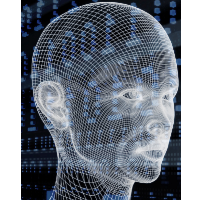San Diego County Quietly Scanning Faces for Its Growing Surveillance Database
 (graphic: Electronic Frontier Foundation
(graphic: Electronic Frontier Foundation
San Diego County residents have been quietly getting some extra face time with law enforcement personnel who have deployed military surveillance technology to capture their images for security checks and store them in a database.
A 10-month-old pilot program funded by the Department of Homeland Security uses facial recognition technology to search for matches in a growing database that includes 348,000 arrestees. The Tactical Identification System (TACIDS) is used by 25 local, state and federal law enforcement agencies, including U.S. Immigration and Customs Enforcement (ICE), according to the Electronic Frontier Foundation (EFF).
Officers use a computer tablet or mobile phone to snap a picture of someone they encounter and query the database in one seamless procedure. According to a TACIDS draft policy reviewed by the EFF, officers can take a picture if they have consent or have lawfully detained a subject. But a third option is more problematic. Images can be collected from social media, security cameras and “from a distance as part of surveillance operations.”
The program was rolled out at the beginning of the year without public hearings and little media attention, using software developed by FaceFirst, a division of Airborne Biometrics Group headquartered in Camarillo. The Center for Investigative Reporting (CIR) says officers have run 5,629 queries through the database as of November 1, with nearly 2,000 coming from the San Diego Police Department.
The technology has been around for years, but it has been only recently that the time necessary to snap a picture and get a database response has shrunk from minutes to seconds, making it a more effective tool. While it is often used in one-on-one encounters, it has the capacity to “identify everyone in a football stadium in five seconds,” according to FaceFirst CEO Joe Rosenkrantz.
CIR says San Diego is on the leading edge of testing and deploying this technology. It is putting in place a system that can be easily expanded to use stationary cameras and other sources of photographic images, along with massive databases of local, national and international data, to provide surveillance of an entire population.
TACIDS could potentially be hooked up to the California Department of Motor Vehicles (DMV) and its 32-million-photo database, as well as the FBI’s soon-to-be unveiled Next Generation Identification system that Los Angeles Times says will replace its mammoth database of fingerprints with biometric information.
Law enforcement, the military and government—currently responsible for 70% of biometric expenditures—are excited at the prospect of deploying technology that will allow the capture and storage of facial images of anyone bold enough to venture out in public. And so are retailers, who suffer an estimated $34.5 billion a year in shoplifting losses.
Biometrics is currently a $6.5 billion industry and just getting started. It is expected to increase 50% by 2014.
The effectiveness of the tool, the secrecy in which it is being deployed and the policy implications for individual privacy have civil libertarians and at least a few U.S. senators worried. “Facial recognition creates acute privacy concerns that fingerprints do not,” Senator Al Franken (D-Minnesota) said at a hearing of the Senate Judiciary Committee’s subcommittee on privacy, technology and the law. “Once someone has your faceprint, they can get your name, they can find your social networking account and they can find and track you in the street, in the stores you visit, the government buildings you enter, and the photos your friends post online.”
The technology was first implemented on the battlefields of Afghanistan and Iraq by the U.S. military. The Economist documented how it was standard practice to scan the faces of living and dead Afghanis for inclusion in a database, should it be necessary to get a positive ID on the enemy.
In searching for the enemy at home, the San Diego face recognition program was supposed to used by “terrorism liaison officers,” but there is no evidence of that being case. In fact, it can be used on people who are not suspected of any crimes without their permission.
“We were told that this kind of control is to prevent another 9/11, and in fact, it's going to be used to fight the drug war, to pursue other policies where we would not have bargained away our privacy back at that time if we knew that was the tradeoff,” former San Diego ACLU official Kevin Keenan told CIR reporters.
–Ken Broder
To Learn More:
San Diego Gets in Your Face With New Mobile Identification System (by Jennifer Lynch, Electronic Frontier Foundation)
Facial Recognition, Once a Battlefield Tool, Lands in San Diego County (by Ali Winston, Center for Investigative Reporting)
Instant Facial Recognition Now in Place for Local Law Enforcement (by Michael Chen, ABC News)
San Diego Testing Face Scanners that Make Civil Libertarians Nervous (by Ken Broder, AllGov California)
FBI’s Facial Recognition System Targeted an Innocent Person up to 1 out of 5 Times (by Noel Brinkerhoff, AllGov)
- Top Stories
- Controversies
- Where is the Money Going?
- California and the Nation
- Appointments and Resignations
- Unusual News
- Latest News
- California Forbids U.S. Immigration Agents from Pretending to be Police
- California Lawmakers Urged to Strip “Self-Dealing” Tax Board of Its Duties
- Big Oil’s Grip on California
- Santa Cruz Police See Homeland Security Betrayal in Use of Gang Roundup as Cover for Immigration Raid
- Oil Companies Face Deadline to Stop Polluting California Groundwater





